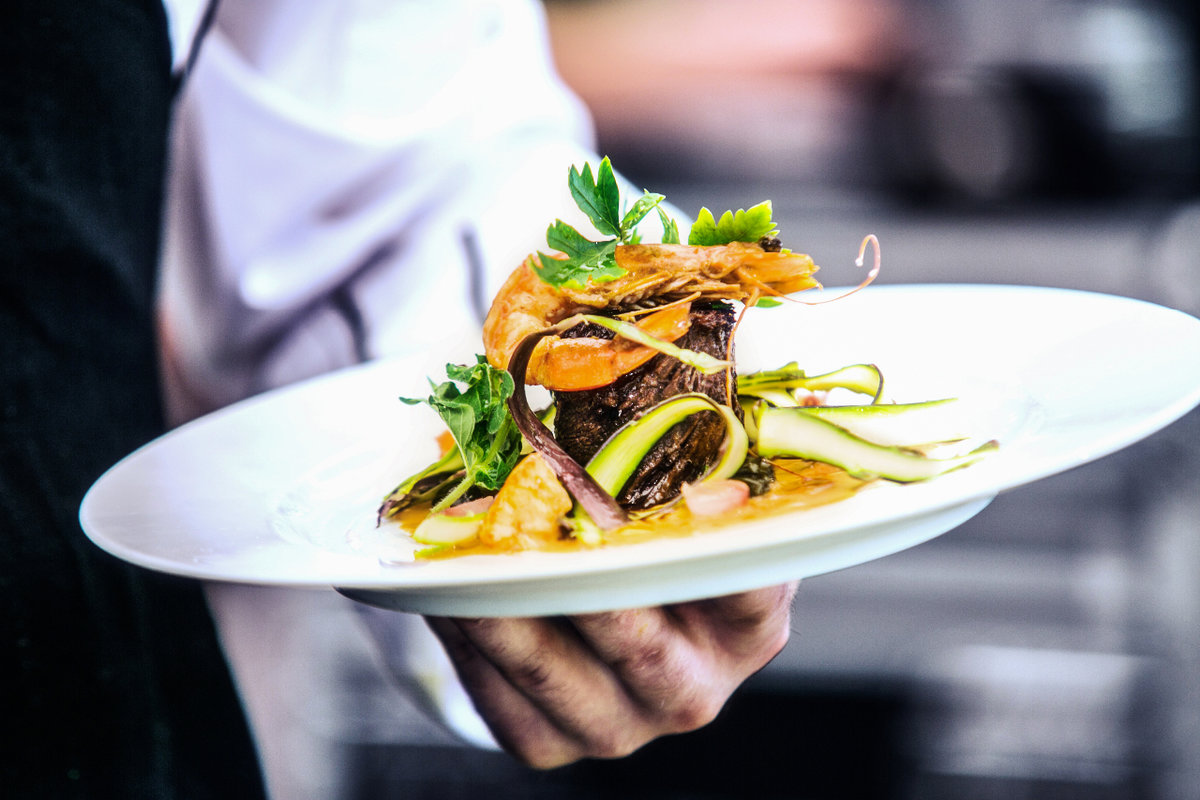
The Art of Food Plating
Top tips to raise your plates to new heights
You don’t need a fine art degree to execute beautifully presented plates. Somewhere between Chicago restaurant Alinea’s Da Vinci-esque attention to detail and a cafeteria scoop and slap, there is a style of food plating that represents your very own establishment. Plating, like art, is personal and should tell the story of your menu.
Menus changed dramatically in the last year to cover losses from restrictions and shutdowns. Entire menus were downsized, menus became hyper-focused and the individual menu items remaining were squeezed to maximize profits. Has your plating adjusted accordingly?
With a splash of art, a touch of math, and a dollop of common sense, you will be on your way to palatable plating. Follow these handy tips:
- Find your focal point. All meals have a focal point. Likely the starting ingredient you used to design the flavour of the dish. Focus on that one ingredient, usually the protein, and build complementary flavours around it. Apply the same principle when plating.
- Splash some colour. Plate colour should enhance the food. White plates are popular because they provide a blank canvas and great contrast for your dishes. However, a flavour-popping special’s ingredients that lean towards beige would benefit from a coloured plate instead. Black dinnerware gives a negative contrast matching well with brightly coloured ingredients.
- The colour of the ingredients can be adjusted for further visual appeal without compromising on design flavour, like using purple fingerling potatoes instead of white.
- Mix up your texture. Offer different visual textures on the plate by mixing and matching to find a balance. Adjust textures while maintaining flavour. Hard, soft, smooth, grainy, fluffy, flaky and coarse.
- Find your best size. Choose plates large enough to accommodate food without overcrowding. Oversized plates offer a dramatic flair but can give the impression of too-small portions. The less on the plate, the more precision required as focus is tight.
- Scale down. Perception of quantity increases if your portion sizes match the scale of the plates, bowls or platters. Simply put, smaller portions on smaller plates. Reducing portion sizes by 10 per cent but visually filling the plate is good for your bottom line. However, if your dinnerware inventory doesn’t contain the size you need and purchasing a new size is out of the budget, strategic placement and arrangement of smaller portions on larger dishes can still deliver.
- Follow the rule of thirds. In food, the rule suggests placing the focal point to the left or right side of the plate. Go further and apply a well-used photography rule to your plates (or bowls or platters) no matter the shape or size to artfully showcase your focal ingredient.
- Work the odd numbers. Although never scientifically proven, many chefs believe an odd number of elements, like shrimp or meatballs, is more visually appealing and gives a perception of more food. Even numbers typically require more precise placement for balance.
- Consider shapes. Consider the shape of the food and the plate. Circles (dots of sauce, a timbale of grains, brussels sprouts) on a square plate add instant drama. Include height and depth.
Common Sense
- Learn to fit in. How the dish reads on the menu should translate easily to the plate. The customer shouldn’t be confused as the order is placed on the table. Plating must fit within the capabilities of the kitchen and skill level of staff.A poor choice of plate, its size and colour, can throw off a well-organized kitchen if it doesn’t have a logical place.
- Watch the trends. Tightening and reducing portion sizes on menus is smart business. Turn it up to brilliant by marketing your menu as nutritionally balanced to hit those customers craving healthy, tasty and beautiful food.
- Make it a movable feast. Walk around with your plated meal. Does it move?
- Step back. However beautiful your plate looks, it always comes down to how it “eats.” Sit in the diner’s chair and dig in. Is it the experience you were aiming for?
Remember:
- Use a clean plate – no chips, fingerprints, scratches or markings
- Plate quickly enough to maintain proper food temperature
- Don’t let food touch the rim
- Pick a focal point/ingredient
- Ensure servers know the direction in which the plate should be served
Elevating your food with thoughtful plating gives a memorable first impression before your customers even take a bite. If they grab their cameras before their forks? Your food plating is a masterpiece.
Written by Cheri Thompson, originally posted on chefconnexion.com
Visit chefconnexion.com for more articles



